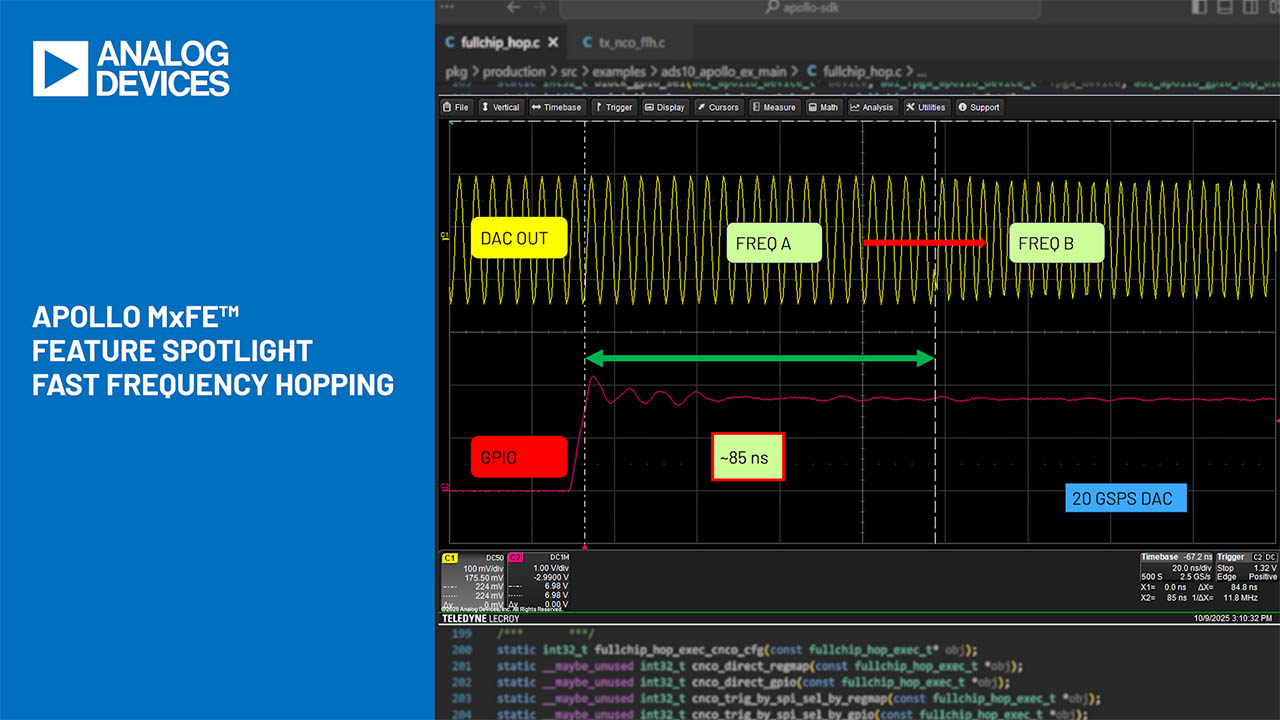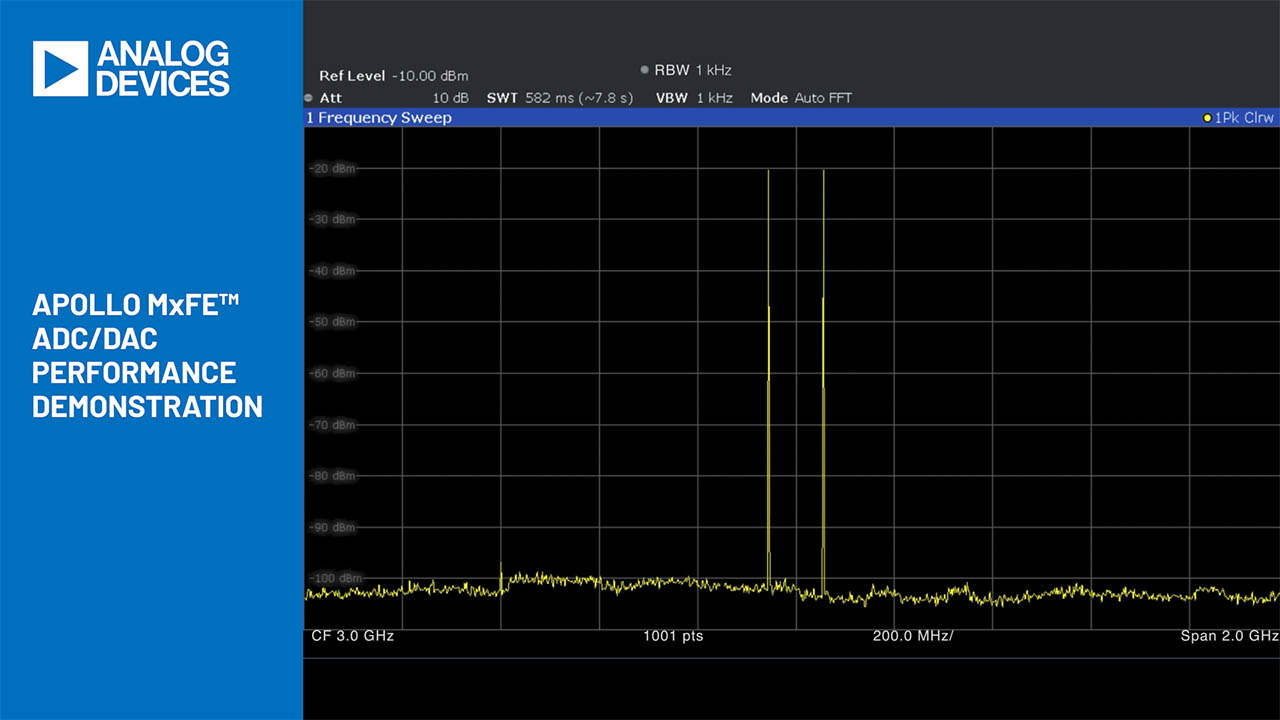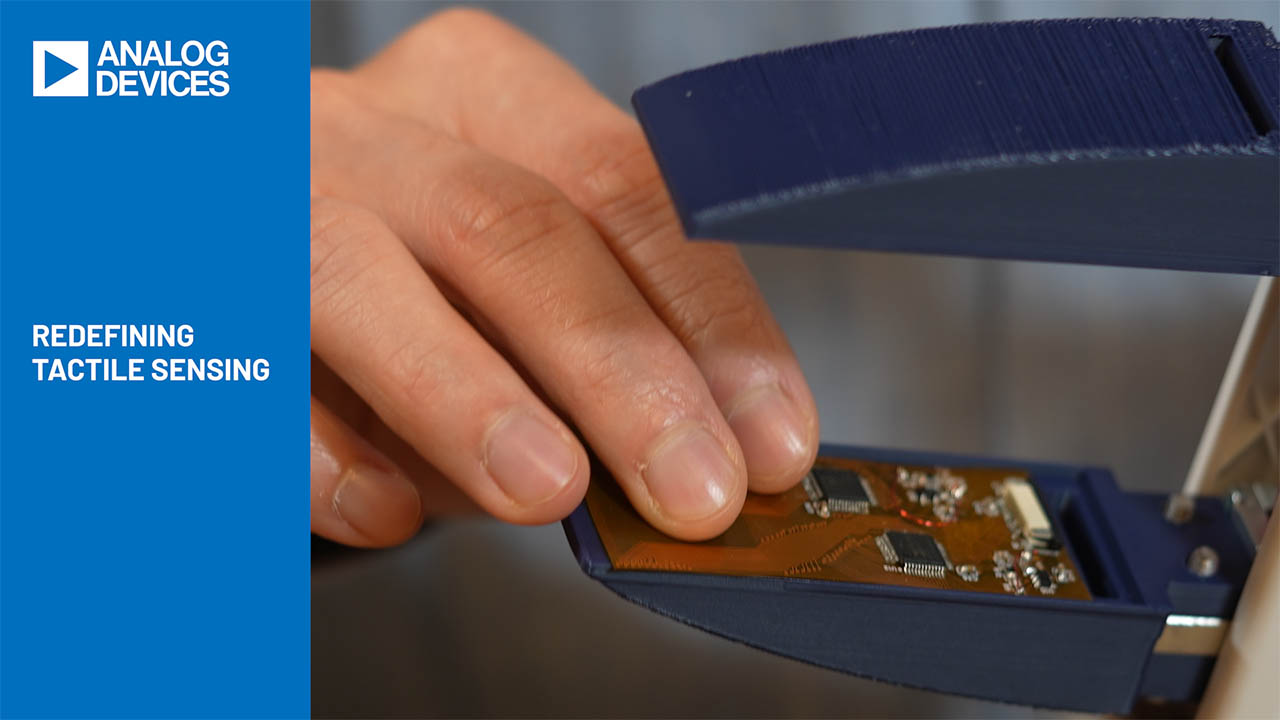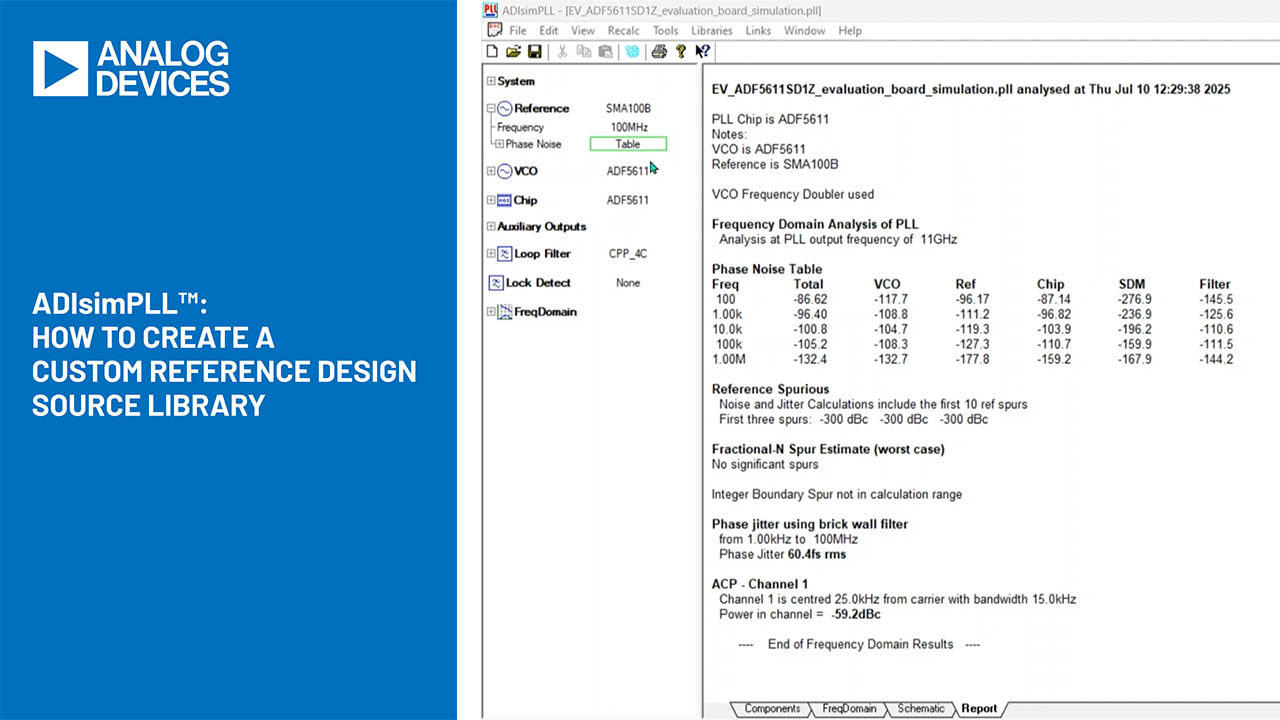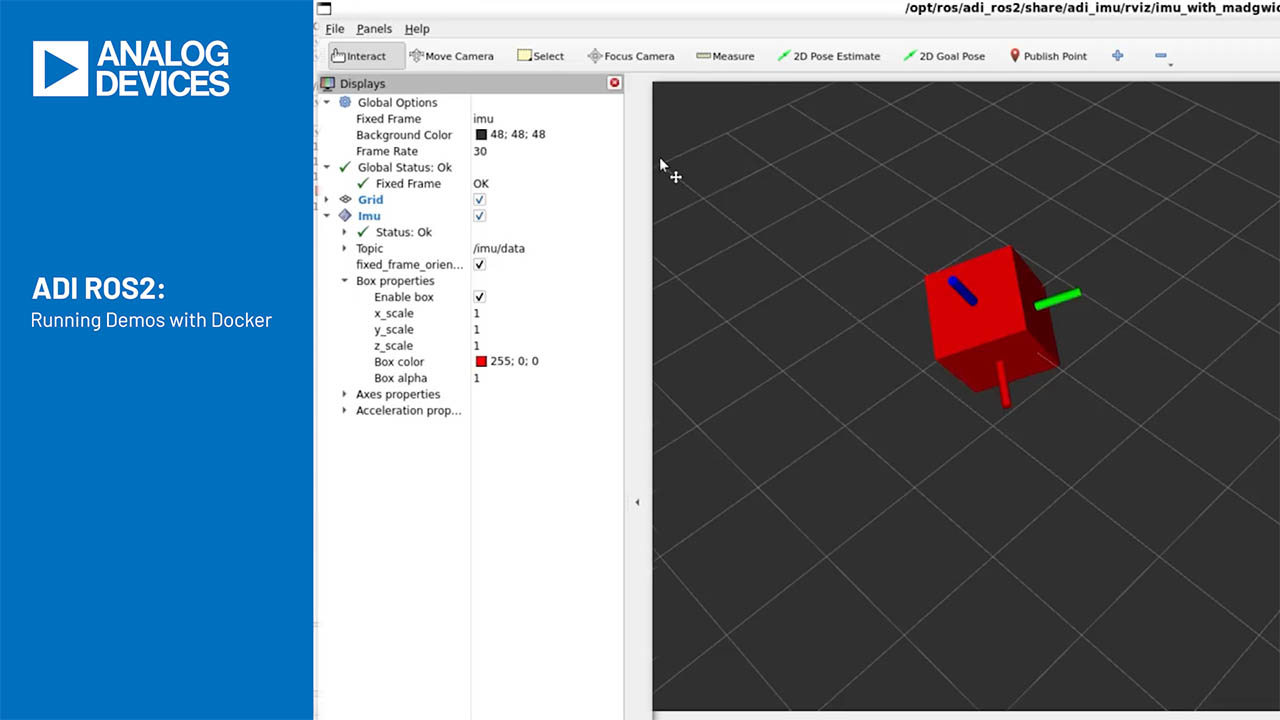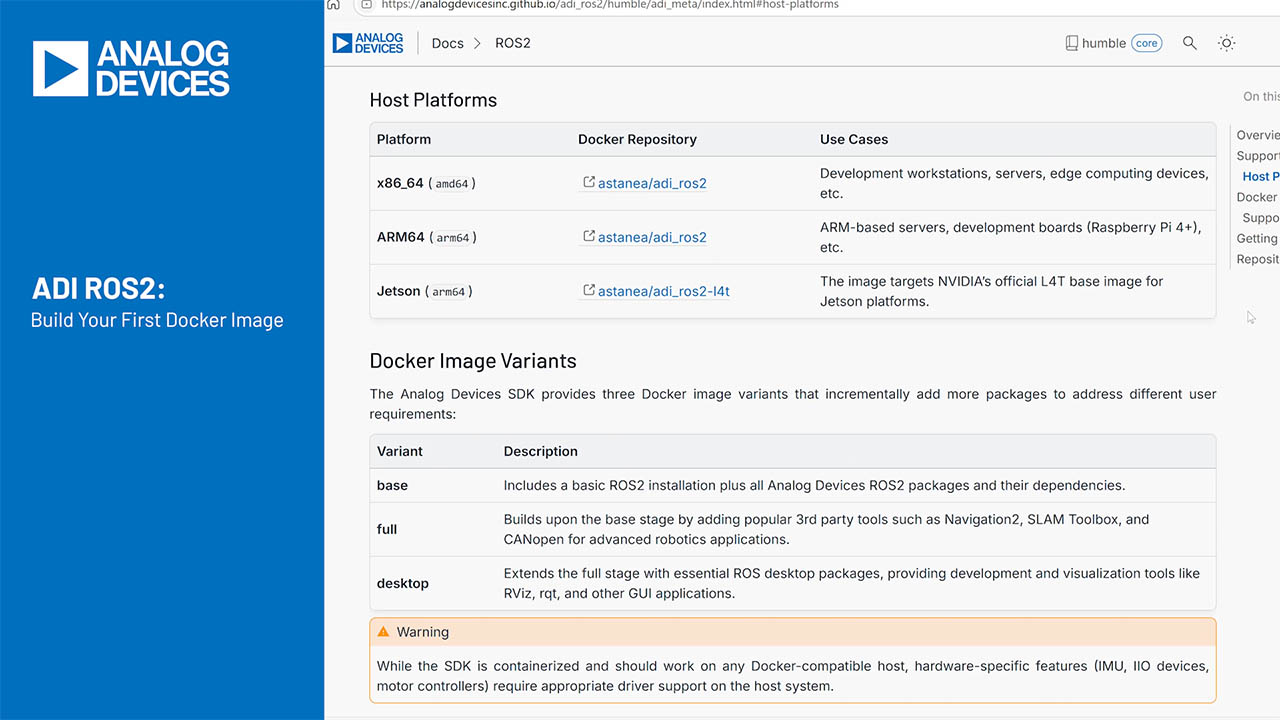Design a Logamp RF Pulse Detector
Logarithmic amplifiers (commonly known as logamps) are useful for burst detection and measurement due to their ability to detect signals that vary over a very large dynamic range. Monolithic logamps are capable of detecting RF bursts as short as 20 ns at frequencies to 3.5 GHz, and they can detect amplitude variations as large as 120 dB.1 Logamp burst detectors are commonly used in applications such as radar and the demodulation of amplitude-shift-keying (ASK) signals. This article describes the issues that designers must consider when applying logamps to these tasks, and discusses techniques and pitfalls associated with measuring a logamp’s pulse response time.
To understand how a logamp detects RF bursts, it is first necessary to understand the basics of logamp operation. Figure 1 shows a simplified block diagram of a typical logamp. The core of the device is a cascaded chain of linear amplifiers, each with a gain typically between 10 and 20 dB. For simplicity, this example shows a chain of five amplifier stages, each with a gain of 20 dB, or 10X. A small continuous sine wave is fed into the first amplifier in the chain and progresses through the chain. At some stage, it becomes so big that it begins to clip. In this example, the clipping (or limiting) level has been set at +1-VDC peak, and it occurs at the output of the third stage. The clipped signal continues through the signal chain, maintaining its +1-VDC peak amplitude as it goes.

Figure 1. Logamps use successive detection to calculate the log of the envelope of a signal. The full-wave rectified outputs from the detectors are summed and must be filtered before the output. The corner frequency of the lowpass filter determines the response time of the logamp to change at the input.
The signal at the output of each amplifier is fed into a full-wave rectifier or detector, and the outputs of these rectifiers are summed together. The summed output is then applied to a lowpass filter, which removes the ripple of the summed, full-wave-rectified signal. (Some logamps have built-in lowpass output filters, whereas others require external filters.) The summed current increases linearly for an exponential increase in input signal, so the output signal is proportional to the log of the envelope of the input signal. When the input signal is continuous (not pulsed), the logamp responds by putting out a steady-state DC voltage. (A more-detailed explanation of the operation of the logamp is contained in reference 2.)
Now consider what happens if the input signal is not continuous, but pulses on and off instead. The logamp’s response time—the time it takes the output to change in response to a change at its input—is dominated by the RC time constant of the lowpass output filter. The bandwidth of this filter is commonly referred to as the video bandwidth. Setting the video bandwidth very high obviously will produce residual output ripple for low frequency input signals. Figure 2, for example, shows the response of an AD8313 monolithic logamp to a 10-kHz input burst. The AD8313 can work at frequencies to 2.5 GHz and achieves a 65-dB dynamic range. Since the on-chip video bandwidth of the AD8313 is set to approximately 13 MHz, there is excessive output ripple in response to this low-frequency input. This scenario demonstrates the fact that the corner frequency of the lowpass output filter determines the logamp’s minimum input frequency. Logamp designers customarily set the minimum input frequency to a value somewhere between five and 10 times the video bandwidth. However, the logamp can be used to detect lower frequency inputs without any penalty as long as sufficient external lowpass filtering is used. (In some cases, this can be as trivial as adding a load capacitor to the log output.3

Figure 2. Applying a signal to a logamp whose input frequency is equal to or lower than the video bandwidth will result in excessive ripple at the output. This ripple can be easily eliminated with additional external lowpass filtering. The linear tail on the output signal is caused by the non-ideal (exponential) decay on the input signal.
The logamp’s video bandwidth should not be confused with its input signal bandwidth. The input signal bandwidth of a monolithic logamp typically ranges from 50 MHz to approximately 2.5 GHz, whereas the video bandwidth of the output filter typically ranges from 1 to 30 MHz. The table lists the maximum input frequencies and video bandwidths for a number of Analog Devices’ logarithmic amplifiers. Note that the AD640 and AD641 do not have any on-chip, lowpass filter, and require external filtering. The advantage of this arrangement is that the corner frequency can be set at an arbitrarily high frequency. This can yield rise times as low as 6 ns.
| Logamps with high video bandwidths respond quickly to bursts |
||||||
| Device | Maximun input bandwidth | Video bandwidth | Rise time 10 to 90 percent | Dynamic range | Log conformance | Limiter output |
| AD640 | 120 MHz | N/A (see text) | 6 ns | 50 dB | ±1.0 dB | Yes |
| AD641 | 250 MHz | N/A (see text) | 6 ns | 44 dB | ±2.0 dB | Yes |
| AD8306 | 500 MHz | 3.5 MHz | 67 ns | 95 dB | ±0.4 dB | Yes |
| AD8307 | 500 MHz | 5.0 MHz | 500 ns | 92 dB | ±1.0 dB | No |
| AD8309 | 500 MHz | 3.5 MHz | 67 ns | 100 dB | ±1.0 dB | Yes |
| AD8310 | 440 MHz | 25 MHz | 15 ns | 95 dB | ±1.0 dB | No |
| AD8313 | 2500 MHz | 13 MHz | 45 ns | 65 dB | ±1.0 dB | No |
When selecting a logamp for its response time, the designer must consider its primary application. Figure 3 shows a logamp used in a circuit to detect a simple ASK signal. In this example, the presence or absence of an RF burst conveys the 1s and 0s of digital information. It can also be used for radar applications where the arrival time of the burst is the critical parameter to be measured.

Figure 3. In a simple amplitude-shift-keying (ASK) system, the logamp converts bursts that can vary over a large dynamic range into pulses that vary in amplitude over a very narrow range. A comparator is used to provide a constant amplitude output for all input levels.
Although the signal detected by the logamp can vary over a large dynamic range, the logamp’s output amplitude is of no interest. What matters is that it detects the presence or absence of the burst. Indeed, in the application shown, the logamp’s output is fed to a comparator. The comparator’s threshold is set to a voltage that corresponds to a logamp input level that is slightly above the bottom of its dynamic range. In applications such as this, it is standard practice to specify the response time as a 10-to-90-percent rise time—that is, the time it takes the signal to go from 10 to 90 percent of its final value. While this standard does not indicate how long it takes before the logamp provides a precise reading of the input amplitude, it does give a good indication of how narrow a pulse the logamp can detect.
In applications where measurement of the size of the input signal is critical, it is more appropriate to define the response time as the time between the onset of the burst and the point where the logamp’s output reaches a certain portion of its final value (0.5 dB of final value is commonly used).
Figures 4a and b show the results of pulse-response measurements on the AD8314, which is optimized for detection and control of transmitted time-division-multiple-access (TDMA) bursts in mobile handsets. The logamp operates from 100 MHz to 2.5 GHz and has a dynamic range of 45 dB. Figure 4a shows the output responses for input levels of +10, 0, –10, and –20 dBm (the +10-dBm input signal is shown). It is immediately apparent that there is a problem with the falling edge of the logamp’s output signal. The falling edge on this plot has a long tail that is very slow to settle, compared with the rising edges. However, on closer examination, it can be concluded that the logamp is doing exactly what it should be doing—detecting signals that vary over a very large dynamic range. Looking closely at the decay of the input signal in Figure 4a, it can be seen that it does not immediately and completely turn off at the end of the 300-ns burst. This signal decays to a level that is barely visible to the eye on a linear scale such as that of an oscilloscope. However, in the log domain, the signal remains relatively large after the end of the burst. Of course, the logamp detects this relatively large signal.

Figure 4. Excessive fall time is a characteristic of many logamp response-time measurements. On closer examination, however, the input burst, which at first glance seems to have a clean decay (a), actually decays quite slowly from a logarithmic perspective (b). The logamp faithfully measures this signal, which is still relatively large from a logarithmic perspective.
Figure 4b shows the +10-dBm input signal magnified to a larger scale. Here, it is clear that the burst persists at a lower level for an additional 100 ns and takes some additional time after that to settle. The result of this 100-ns burst extension is clearly visible at the output of the logamp. Note that this problem is not visible at the onset of the burst. When rising, the input signal quickly ramps from zero to a value that is close to its final value. The settling portion of the rise time entails moving through a voltage range that, in decibel terms, is quite small. For example, log(20) – log(10) > log (100) – log(90).
Clearly, precise control of the turnoff of the burst is critical for measuring the fall time of the logamp’s output—more critical than for linear amplifiers. Figure 5 shows a circuit for accurately measuring logamp rise and fall times. A pulse generator is used to turn the RF source on and off. To receive a sharp falling-edge response from the logamp, it is necessary to adjust the pulse width of the pulse generator in 100-ps increments. This allows the RF-generator control to be tweaked until the turn-off pulse disables the burst just as it makes a zero crossing. The ability of the RF generator to react to the burst-enable signal is also critical. Generally, this characteristic of the generator is unknown, and determining it requires some experimentation.

Figure 5. To measure the response time of fast rise-time logamps, a pulse generator with picosecond resolution is required to precisely control the turn-on and turn-off of the burst. FET probes are used throughout to avoid adding excessive load capacitance, which can affect the quality of rising and falling edges.
Throughout these signal measurements, field-effect-transistor (FET) probes are used because they contribute very little load capacitance. This is especially true for the measurement of the logamp’s output, because even small amounts of load capacitance can form a lowpass filter with the logamp’s output impedance and slow down the output edges.
Up to now, the discussion has focused on detecting RF bursts (also called RF pulses)—AC signals that turn on, stay on for a short period of time, and then turn off. Logamps can also detect baseband pulses, but they are not optimized for this function. A baseband pulse is defined as a signal that changes from one DC level (usually, but not always, 0 VDC) to another level for a short period, and then it returns to the original value. A good example might be the signal from a photodiode. In general, DC coupling of this pulse is required. Since most logamps are internally DC-coupled, this is fundamentally feasible. However, there is a practical constraint when using single-supply logamps with differential inputs. The input signal must be positioned a few volts above the ground potential for proper biasing of the first stage. Furthermore, the source is usually a singleended, ground-referenced signal, so it will also be necessary to provide a single-ended-to-differential conversion in order to correctly drive the logamp’s differential inputs.
Figure 6 shows how a signal can be level shifted and converted to a differential form using the AD8138 differential amplifier. The AD8138’s differential outputs then drive the AD8310 logamp, which has an input impedance of approximately 1 k Ω. The four 499-Ω resistors set the differential amplifier’s gain to unity. An output common-mode (or bias) voltage of +2.5 VDC is achieved by applying +2.5 VDC (from a supply-referenced resistive divider) to the AD8138’s VOCM pin.

Figure 6. Logamps can detect DC-coupled baseband pulses, but some signal conditioning is necessary. The pulse must be converted to a differential signal with a bias level that is around mid-supply. Baseband pulses from 1 mV to 1 V can be detected. The pulse width can be as narrow as 40 ns.
In this application, it is necessary to trim the circuit’s offset voltage. Remember that an offset of only a few millivolts can dramatically reduce dynamic range in the log domain. Under normal (AC-coupled) operation, the AD8310 compensates for its internal offset voltages. (This is another reason why AC coupling is normally recommended.) When the inputs are DC coupled, this offset-compensation circuitry must be disabled. This is performed by applying a nominal voltage of approximately +1.9 VDC to the AD8310’s OFLT pin. Note that this does not trim the logamp’s offset voltage—it merely holds it at a fixed level and prevents the logamp’s offset-compensation circuitry from misinterpreting DC-input signals as offsets.
The AD8138’s trim, therefore, compensates for both devices’ offsets. The trim occurs by grounding the circuit’s input and slightly varying the gain resistor on the AD8138’s inverting input (a 50-Ω potentiometer is used in this example) until the voltage at the AD8310’s output reaches a minimum. After trimming, the lower end of the dynamic range is limited by the broadband noise at the output of the AD8138, which is approximately 425 μV peakto-peak. Figure 7 shows how this circuit responds to a series of 100-μs pulses having amplitudes of 1 mV, 10 mV, 100 mV, and +1 VDC. The circuit can detect pulses as narrow as 40 ns. The excessive noise on the output signal before and after the pulse is due to signal-generator noise.

Figure 7. The DC-coupled logamp circuit in Fig. 6 provides constant output step sizes for constant ratio changes at the input. The output signals represent the response to 100-μs input pulses of amplitude 1 , 10, and 100 mV, and +1 VDC.



